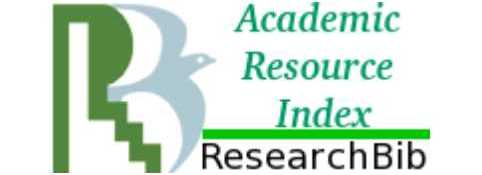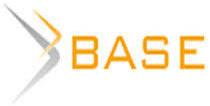Lean technologies for managing the processes of professional self-realization of teachers
The article analyzes the results of testing a resource-saving (humanistic) type of social technology that accompanies the processes of teacher’s self-realization. These are universal technologies that allow diagnosing and adjusting professional efforts of young teachers, making management decisions that help to preserve the human resources of educational organizations and to reveal the teacher’s professional capabilities. Self-realization is a source of preserving health and developing the teacher’s personality. The author sees it as a balance between the need to fulfill social roles and a chance to keep one’s individuality. The article provides an analysis of a discussion about the problems of education and science management. It is noted that the “effective management” system would not accept criticism or complaints from the professional scientific professorial elite. In this situation, the author sees a way out in relying on the teacher’s personality. In a managerial sense, we are talking about the use of lean technologies to support self-realization processes that will be protection tools against professional and emotional crises. Lean technologies ensure the change of stimulating management to saving (understanding) management. The lean context of working with human resources can be provided by use of humanistic technologies to support professional activities. The emphasis on self-realization processes is an option for solving the problem of educational institutions being “carnivalized”. Management technology to support self-realization processes involves creating suitable conditions, stimulating a person’s creative activity, strengthening their professional dignity. These are tools for adapting young teachers to professional activities. The empirical data necessary for diagnosing and correcting self-realization processes at all stages of applying the “lean” technology was obtained by means of a hybrid research complex that involves a quantitative-qualitative approach and a number of appropriate methods and techniques combined.
Ushakov, D. V. (2021), “Lean technologies for managing the processes of professional selfrealization of teachers”, Research Result. Sociology and management, 7(4), 191-203. DOI: 10.18413/2408-9338-2021-7-4-1-3.


















While nobody left any comments to this publication.
You can be first.
Abulkhanova-Slavskaya, K. A. (1991), Life strategy, Mysl', Moscow, Russia. (In Russian)
Gessen, S. I. (1995), Foundations of Pedagogy: An Introduction to Applied Philosophy, Shkola-Press, Moscow, Russia. (In Russian)
Donskih, O. A. and Logunova L. Yu. (2019), “Teacher and pupil: happiness of interaction”, Vysshee obrazovanie v Rossii, 28 (4), 60-71. (In Russian)
Diev, V. S. (2020), “Management at a Russian university: goals, culture, criteria”, Ideas and Ideals, 12 (4), 77-84. (In Russian)
Ivanov, A. V. and Fotieva, I. V. (2020), “Modern University Education: Administrative and Bureaucratic Pressures and Their Consequences”, Ideas and Ideals, 12 (4), 113-128. (In Russian)
Illarionov, G. A. and Kudashov, V. I. (2020), “The Carnival of Education: Between McDonald's and Traditionalism”, Ideas and Ideals, 12 (4), 129-144. (In Russian)
Ibragimov, R. N. (2021), “Institutional Erosion of Science and Education: Postmodern Grimaces”, Ideas and Ideals, 13 (1), 11-23. (In Russian)
Boyadzhieva, P. A., Vorontsov, Ya. A., Ignat'eva, E. Yu., Matveeva, N. A., Osipova, A. A. and Osipov, A. M. (2019), Information in education management: theoretical problems, in Osipova, A. M. and Boyadzhieva, P. A. (eds.), Herzen University, St. Petersburg, Russia. (In Russian)
Kon, I. S. (1984), In search of self: personality and its identity, Politizdat, Moscow, Russia. (In Russian)
Kurbatova, M. V. (2016), “Higher Education Reform as an Institutional Project of the Russian Bureaucracy: the Content and the Outcomes”, Mir Rossii, 25 (4), 59-86. (In Russian)
Kuleshova, A. V. and Podvoyskiy, D. G. (2018), “Paradoxes of publication activity in the field of modern Russian science: genesis, diagnosis, trends”, Monitoring obshhestvennogo mneniya: ekonomicheskie i sotsialnye peremeny, (4), 169-210. (In Russian)
Kurlenya, K. M. (2020), “Education as Phantasmagoria”, Ideas and Ideals, 12 (4), 85-98. (In Russian)
Logunova, L. Yu. (2016), “Sociocultural foundations of social and political mobilization”, in Shpak, L. L. (ed.) Political consciousness and behavior: evolution and mobilization: a collective monograph, Kemerovo, 5-51. (In Russian)
Logunova, L. Yu. (2014), “Strategies and techniques of hybrid research complexes”, Innovations in technologies and education: collection. articles. participants of the VII International Scientific and Practical Conference, Belovo, Russia. (In Russian)
Logunova, L. Yu., Utkina, A. N., Kovalyonok, Ya. G. and Ushakov, D. V. (2019), “Technologies for well-being of the teacher’s professional activity: problems of measurement and understanding”, Artium magister, 19 (1), 21-30. (In Russian)
Maslow, A. (1999), Motivation and Personality, Transl. by Gutman, T. and Muhina, N., Evraziya, St. Petersburg, Russia. (In Russian)
Orekhovskiy, P. A. and Razumov, V. I. (2020), “Carnival Time: Russian Higher Education and Science in the Postmodern Era”, Ideas and Ideals, 12 (3), 77-94. (In Russian)
Rogers, K. (2000), On becoming a person: A therapist’s view of psychotherapy, Transl. by Iseninoy, E. I., Moscow, Russia. (In Russian)
Rozov, N. S. (2020), “High School Crisis or Stagnation? From Humanitarian Metaphors and Journalism towards Weberian Political Sociology”, Ideas and Ideals, 12 (4), 99-112. (In Russian)
Sevost'yanov, D. A. (2021), “Postmodernism in Education and System Inversions”, Ideas and Ideals, 13 (1), 52-68. (In Russian)
Ushakov, D. V. (2020), “Estimating the young teachers’ professional self-realization”, Research Result. Sociology and management, 6 (1), 106-115. (In Russian)
Frankl, V. (1990), Man's Search for Meaning, Progress, Moscow, Russia. (In Russian)
Frankl, V. (2000), Will to sense, Translated by Gurev, L., Aprel-Press, EKSMO-Press, Moscow, Russia. (In Russian)
Goldstein, K. (1939), The organism, American Book Company, N.-Y, USA.
Goldstein, K. (1940), Human nature in the light of psyschopathology, Mass., Harvard University Press, Cambridge, USA.
Logunova, L. Y., Mazhenina, Ek. A. and Nyatina, N. V. (2019), “Methods for the collection and analysis of civil initiatives to improve the life-support system” Proceedings of the International Conference Communicative Strategies of Information Society, Russia, 45-49.